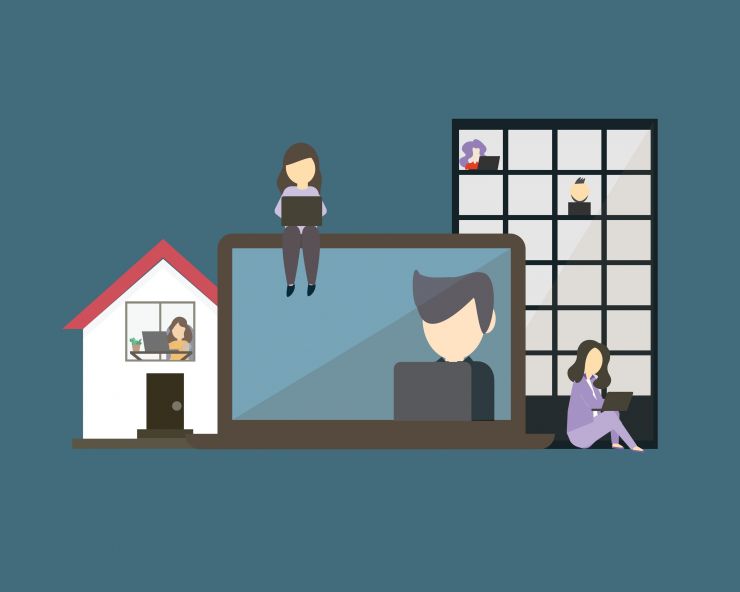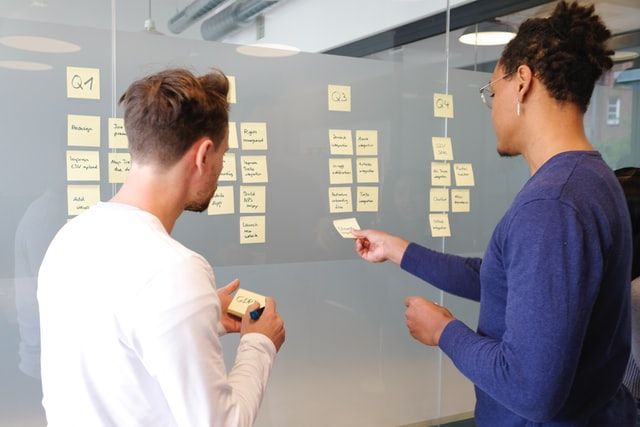
Hybrid Working, which promised to usher in an exciting new way of working, has now been reduced to a facile decision on how many days employees should work in the office. While Hybrid Working can result in some accommodation cost savings and can be beneficial to improving employees’ work-life balance, much of the thinking that underlies Hybrid Working is based on a number of misplaced assumptions that limit the benefits of Hybrid Working.
So what’s so wrong with Hybrid Working and how can these problems be addressed by adopting a more ambitious and better way of working?
Hybrid Working doesn’t increase the talent pool
Hybrid Working with an obligation to visit a designated office a given number of days each week still limits the talent pool to the people who live within a reasonable commuting distance of a designated office. Why would a potential employee living beyond commuting distance relocate to travel a few days a week to a designated office?
Furthermore, it doesn’t need to be a binary choice between working at home or in the office. Technology enables employees to work in a wide range of suitable locations. Prior to the pandemic use of coworking spaces was increasing exponentially and the signs are this will pick up again as it is an attractive option for those who are unable or choose not to work at home but seek a nearby location to carry out their work activities. The 2020 Future of Work report states that 55% of Remote Workers that didn’t use co-working before stated that they will consider it in the future.
Organisations looking to attract people with scarce skills or experience recognise that technology enables the majority of their work could be done at home or at a nearby coworking hub and only require employees to visit the office for specific purposes.
Hybrid Working doesn’t demonstrate trust
The overwhelming evidence of the lockdowns is that employees can be trusted and can be as or more productive away from the office. From the many surveys conducted during lockdowns, there is now plenty of statistical data, that shows remote work has had a positive impact on the workforce and their productivity.
However, in many implementations of Hybrid Working, even the days of the week that employees spend in the office are determined by the organisation or its managers. Obviously, it is easier to manage the facilities of the building if the number of people who will be working on-site on any given day is predictable but that is more to do with administrative convenience than business benefits. Those distrustful managers that fall in McGregor’s Theory Y categorisation are just more comfortable when they can see their team members in person.
There is an argument that it is beneficial to have all the members of a team in the office on the same day. However, in many organisations people work across teams and scheduling this cross-functional face-to-face working and is proving to be an insurmountable micro-management challenge. The alternative is to allow people to make their own arrangements to meet the people they need to work with physically or virtually.
Bringing people into an office on specific days is often based on an erroneous assumption that all interactions need to happen in real-time. In reality, much communication is asynchronous and can be a more efficient use of people’s time. While email is still the most popular, tools such as WhatsApp, Slack, and Teams Chat are increasingly used as they provide a faster, easier experience than email.
Assuming all collaboration must take place in the office is outmoded

The belief that collaboration is most creative when people meet in person is dubious and subject to practical difficulties. This view often results from managers’ attitudes rather than evidence. Those with an extrovert personality have struggled most with lockdowns and have missed face-to-face contact, whereas many introverts don’t see this as a problem. Extroverts often assume everyone shares their view that meetings are better conducted in person.
When people are in an office they will turn to whoever happens to be there that day for comments and suggestions but they might not be the right people to ask. Indeed Gartner has data that shows that fully on-site teams are least likely to show high levels of engagement, trust or discretionary effort, are least comfortable taking risks and are least likely to provide opportunities to innovate outside of meetings. Another study found very little difference in the factors that explain collective intelligence of the face-to-face and remote teams.
In reality, many job roles have limited requirements for collaborative meetings. For those that have, there are established virtual collaborative tools such as Mesh, Mira, and Mural that will only get better, with new products arriving in the near future. The effective use collaboration tools may require a culture change. However, those organisations that are globally based have been successfully using virtual collaboration tools for a number of years. Surely we have moved on from post it notes.
There is an unrealistic perception of the Hybrid Working benefits of water cooler interactions
Much has been written about the benefits of chance meetings in a busy office resulting in discovering new information or sparking ideas with colleagues, often called water cooler conversations. The very essence of hybrid working means there will be fewer people in the office to interact on any given day. In any case, in the days when everyone was based in the office, the incidence of these Eureka moments was probably not as common as imagined. If fate was so dependable then dating apps would not enjoy the popularity they have.
It is now possible to use technology to create intentional collision opportunities, sometimes called “planned serendipity”, that connects people who would never normally interact in the real world. For example, Slack Huddles will recreate the “spontaneous and informal discussions” that traditionally occurred in the office. Users start huddles within an audio channel or direct message string, then co-workers can enter and exit the conversation as they like. Slack claims it is the equivalent of kicking off a chat when someone walks by your desk. Slack has also added a video, voice and screen recording feature so users can leave messages for each other, without having to coordinate schedules. Such tools can be used to generate informal conversations by including photos of employees’ pets, the latest film or TV series, or interesting industry news.
Physical presence is no longer essential to mantain an organisation’s culture
An organisation’s culture is reflected by its attitudes, behaviours, and values. Culture will often adapt as the organisation changes and grows. It also plays a significant role in the relationships between employers and employees and how satisfied employees are with their job roles. With less time spent working in an office environmnt it will play a much reduced role in contributing to an organisatios's culture.
Paul Allsopp, of The Agile Organisation, believes work is about activity, not place, and that culture and inclusion are about connection and belonging. This means a key part of agile working is creating communities that may or may not be in a common workplace – and they will be increasingly virtual. Facebook has enabled a plethora of virtual communities.
The key is to building culture in a virtual environment is to find the appropriate tools use them effectively to foster that culture, continually checking in and assessing to keep everyone moving in the same direction.
There are much greater benefits for organisation that adopt a better way of working. This is Agile Working (aka Smart(er) Working) where employees are granted some autonomy so they can choose where, when,, and even how they work. It doesn’t mean employees will never visit offices but when they do it will be based on intelligent choices related to the work activities they need to undertake.
For those organisation who are unsure whether that are maximising the benefits available from adopting new ways of working we have launched a Hybrid Working Healthcheck and Rescue Service.

